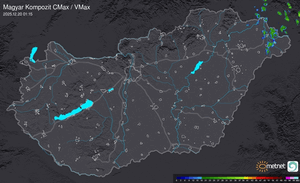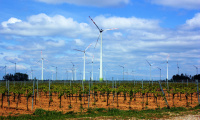Bioszféra
Köszi a tippet, de nem akarom őket elüldözni/kicsinálni, csak érdeklődtem, hogy máshol is-e ? Tegnapelőtt ültettem a kertben némi feketeberkenyét, meg somot és majdminden lyukra lyutott 1-2 cserebogárkezdemény, így aztán a vakondok maradnak, a sátorhelyek meg lassan teljesen megszűnnek a ~4000 m2-en. Részemről éljen a biodiverzitás
? Tegnapelőtt ültettem a kertben némi feketeberkenyét, meg somot és majdminden lyukra lyutott 1-2 cserebogárkezdemény, így aztán a vakondok maradnak, a sátorhelyek meg lassan teljesen megszűnnek a ~4000 m2-en. Részemről éljen a biodiverzitás
Más. Mindenkinek, aki nem szereti:
Kicsit utánanéztem a dióburok fúrólégy természetes ellenségeinek, ezeket találtam:
Biosteres sublaevis, LarvaeCoptera occidentalis,Trybliographa sp.
Ezekből állítólag a Coptera occidentalis szlovákoknál jelen van, a többi csak Ámerikában (vagy nincs, sajna nekem nem egyértelmű): Link
Plusz info (angolul, bocs):
Link
Walnut husk fly (Rhagoletis completa) is an economically important fruit fly, which attacks several species of walnuts (Juglans spp). The insect is indigenous to North America, the best method for trapping the walnut husk fly adults is a yellow sticky board with ammonium carbonate as an attractant. In the present paper the bionomics, geographical distribution, methods of monitoring and controlling the walnut husk fly with special emphasis on biological control of the pest are presented. In a scientific literature is a lack of information regarding biological control, however if we take into consideration the foreign researches, Slovenian legislation and our experiences we suggest for biological control of walnut husk fly the foliar application of entomopathogenic fungi Beauveria bassiana against adults, soil application of entomopathogenic nematodes against larvae in autumn and spring soil application of entomopathogenic nematodes against adults, when they emerge from pupas. Monitoring of domestic parasitoids of walnut husk fly will be in the future needed in areas where the walnuts are expanded. On different areas of the world several species of parasitoids (Coptera occidentalis, Diachasmimorpha juglandis) are mentioned as an alternative biological control agents to chemicals.
Más. Mindenkinek, aki nem szereti:
Kicsit utánanéztem a dióburok fúrólégy természetes ellenségeinek, ezeket találtam:
Biosteres sublaevis, LarvaeCoptera occidentalis,Trybliographa sp.
Ezekből állítólag a Coptera occidentalis szlovákoknál jelen van, a többi csak Ámerikában (vagy nincs, sajna nekem nem egyértelmű): Link
Plusz info (angolul, bocs):
Link
Walnut husk fly (Rhagoletis completa) is an economically important fruit fly, which attacks several species of walnuts (Juglans spp). The insect is indigenous to North America, the best method for trapping the walnut husk fly adults is a yellow sticky board with ammonium carbonate as an attractant. In the present paper the bionomics, geographical distribution, methods of monitoring and controlling the walnut husk fly with special emphasis on biological control of the pest are presented. In a scientific literature is a lack of information regarding biological control, however if we take into consideration the foreign researches, Slovenian legislation and our experiences we suggest for biological control of walnut husk fly the foliar application of entomopathogenic fungi Beauveria bassiana against adults, soil application of entomopathogenic nematodes against larvae in autumn and spring soil application of entomopathogenic nematodes against adults, when they emerge from pupas. Monitoring of domestic parasitoids of walnut husk fly will be in the future needed in areas where the walnuts are expanded. On different areas of the world several species of parasitoids (Coptera occidentalis, Diachasmimorpha juglandis) are mentioned as an alternative biological control agents to chemicals.


